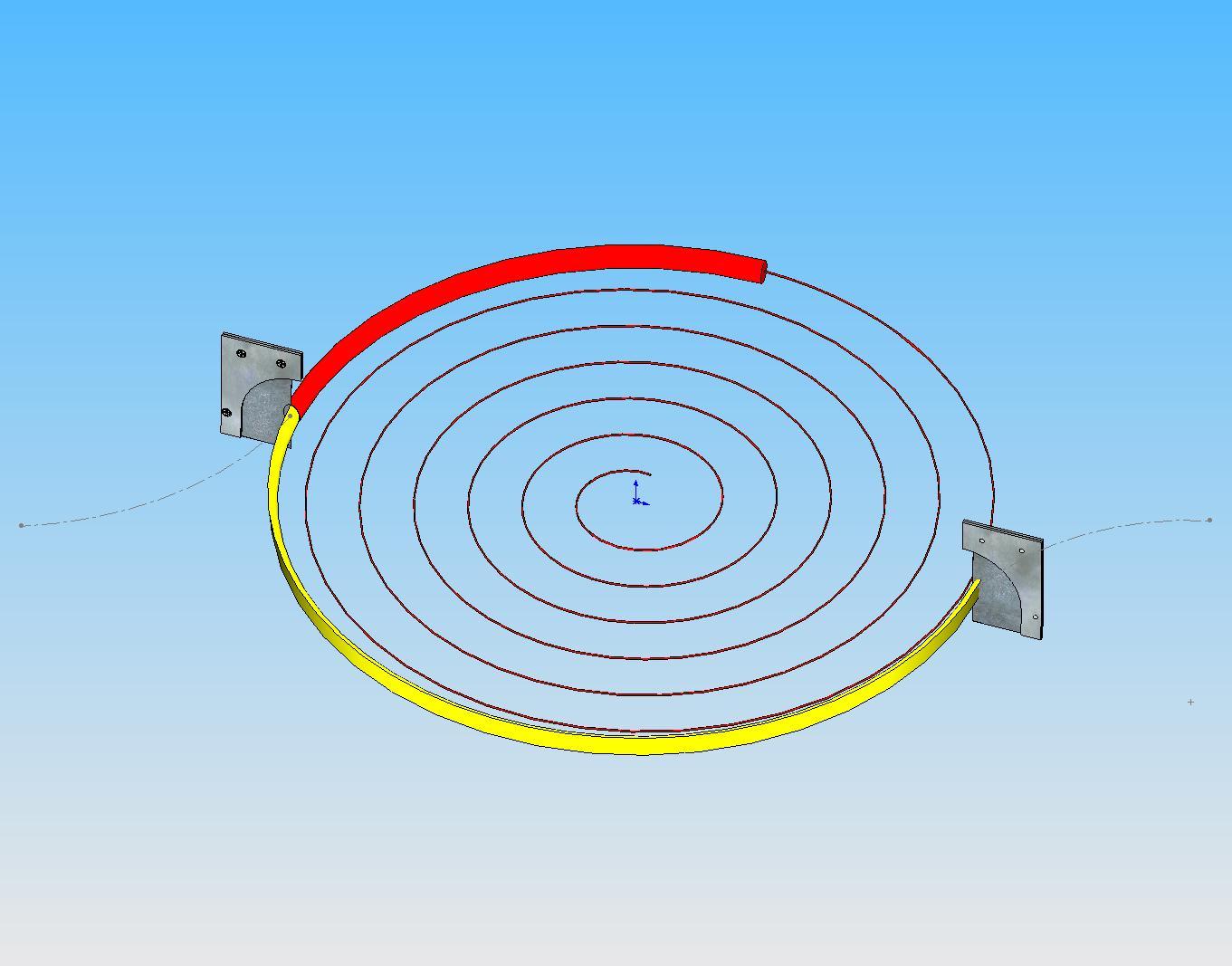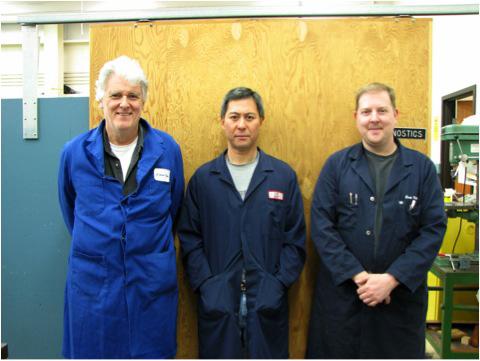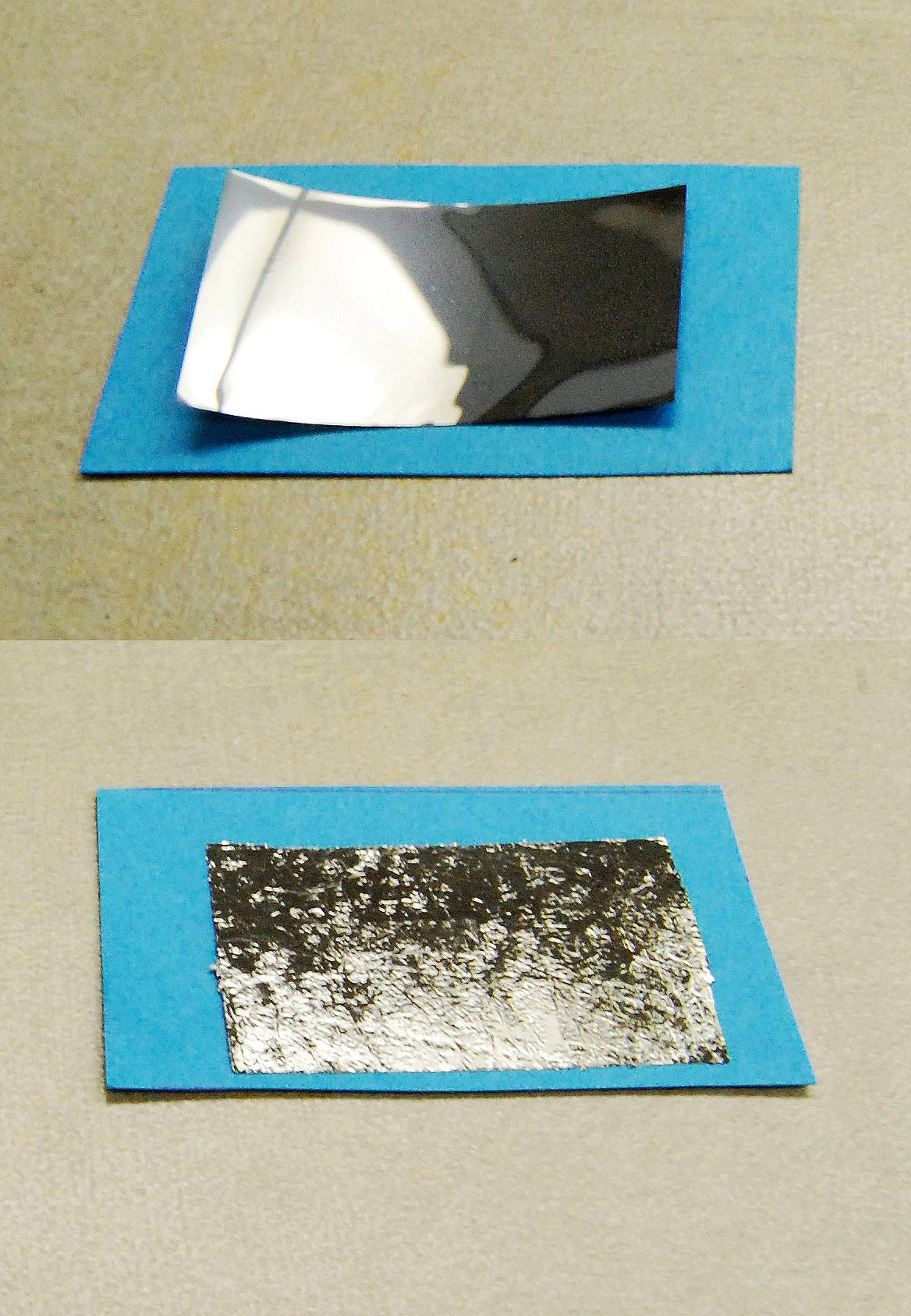 | ||||
(Top): regular pyrolytic graphite foil(Bottom): highly-oriented pyrolytic graphite foil | ||||
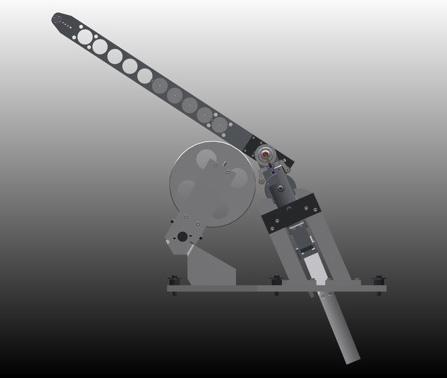 | ||||
Model of Ex1 extraction arm | ||||
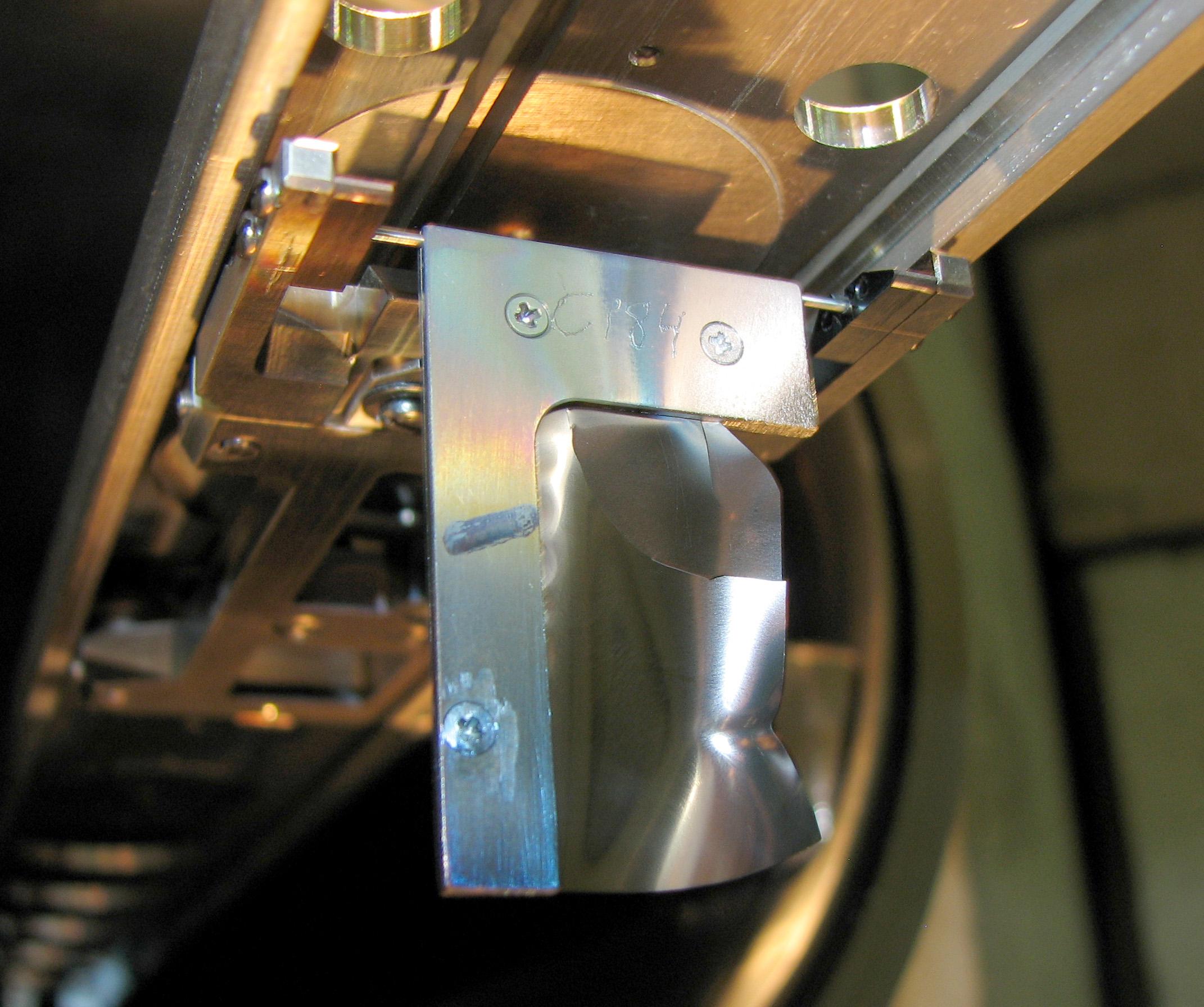 | ||||
Used foil: cracked and warped |
|
| ||
|
| |||
Diagram of extraction |
|
| ||
|
| |||
(Left to right): Dan Gray, Brian Minato, Scott Kellogg |
|
| ||
|
|
On August 23, 2010, a new record at TRIUMF was set: the beam line 1 extraction probe 1 (Ex1) foil was replaced after a lifetime of almost seventeen weeks of high current operation, far exceeding the lifetime of its predecessors!
The Ex1 foil is one of four foils that are placed inside the cyclotron for beam extraction. After the negative Hydrogen ions are accelerated inside the cyclotron, they go through the foil; which strips away their electrons, extracting an intense proton beam. The Ex1 probe delivers high-intensity proton beams to the Meson Hall for the traditional science program. This record-breaking foil was still in good shape when it was replaced by a different type of foil— a carbon wire, to accommodate the low intensity proton irradiation facility (PIF) experiments.
Thinner foils produce better beam quality. This long-lasting foil was a very thin sheet of highly-oriented pyrolytic graphite (HOPG), 1.5 mg/cm2 or 7 microns in thickness, 32 mm in height. Foils can range from 0.25 mm to 16 mm in width, depending on whether they are used for partial stripping or full stripping. The tantalum frame holding the foil is custom-made at TRIUMF, an improvement from the stainless steel frames.
The lifetime of a foil is quantified by the accumulated charge of protons going through the foil. Historically, in average, after an accumulation of 60,000 µA/hour, which— depending on the beam schedule—can take three to five weeks, the foil would begin to crack and warp, producing beams with poorer quality and degraded shape, and increasing spills along the beam line. This particular foil has accumulated a charge of 253,000 µA/hour over its seventeen-week lifespan with negligible loose contamination of 7Be.
Proton irradiation of carbon in the extraction foil generates Beryllium-7. When the foil becomes heated due to the power deposited by the stripped electrons*, the 7Be is released and contaminates the surrounding surfaces. Swiping these surfaces with a specialized circular disk and measuring it with a Geiger counter would detect the amount of Beryllium contamination. Since the January 2005 shutdown, 7Be contamination has been discovered in the vicinity of the Ex1 foil due to the extraction of brighter beams. With the use of the thin, higher quality HOPG foil and an improved frame geometry, the foil temperature is reduced and this prevents the release of 7Be. A contamination-free environment around the extraction foil is achieved.
Thanks to the contributions of Rick Baartman, Dan Gray, Andy Hurst, Scott Kellogg, Brian Minato, Yi-Nong Rao, Marco Schippers and Victor Verzilov, this accomplishment would have a significant impact on cyclotron operations and maintenance. Congratulations to all for this success!
* The energy deposited in the foil comes from the stripped electrons, not from the protons themselves. At 100 μA, this is a power of 54 Watts. Owing to the magnetic field, for thick foils, these electrons pass repeatedly through the foil until they stop. However, if the foils are thinner, the scattering of the electrons during foil passage spreads the energy deposition. At 1.5 mg/cm2, hardly any of the electrons stop at the location of the beam spot where the protons create 7Be; they either reach the frame (27 Watts), or are lost off the bottom. Thus, the thinner foils retain the 7Be instead of contaminating the cyclotron vacuum chamber, and moreover dissipate less total energy, resulting in longer lifetime. (Rick Baartman)
—Ting Wang, Communications Assistant

